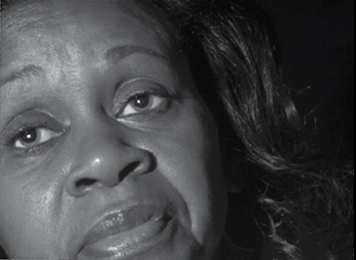Lending Lessons

Lending Lessons
How Gender, Race and Class Affect What Kind of Loan You Receive
In June 2009, the National Council of Negro Women and the National Community Reinvestment Coalition partnered to produce a report titled "Assessing the Double Burden: Examining Racial and Gender Disparities in Mortgage Lending." The report explored race and gender disparities in mortgage lending. The following essay is a modified version of the report's cover letter, and is authored by Dr. Avis Jones DeWeever, director of research for the National Council of Negro Women.

The United States' economic crisis and resulting decline in the global economy are the end results of a foreclosure epidemic that has its roots in many years of predatory lenders targeting communities of color. While race and lending have often been examined, little is known about the interplay of both race and gender when it comes to the critical issues of financial access that is both fair and equal, and lending that is responsible and sustainable over the long-term. Are gender disparities in mortgage lending as stark as racial disparities have previously been shown to be? Do women of color have appreciably different experiences in mortgage lending than their white female counterparts? And in what ways do issues of class influence the experiences of borrowers across race and gender lines? This report answers these crucial questions and many more by examining the experiences of Black, white, and Latino male and female borrowers in the 100 largest metropolitan areas in the United States.
Ultimately, this report finds that women's mortgage lending experiences are not monolithic. Instead, they are greatly determined by race, space, and class. For example, a middle- to upper-income African-American woman in Raleigh, North Carolina, would most likely have a very different mortgage lending result than a similarly situated white woman in that same city or a Hispanic woman in Washington, D.C. Yet, overall, our report uncovers a higher risk of vulnerability to high-cost lending among women of color, with African-American women the most devastatingly impacted.
Strikingly, this work finds that in more than four out of five metropolitan areas examined, middle- to upper-income African-American women were at least twice as likely to have received high-cost loans as their white female counterparts. Similarly, low- to moderate-income African-American women were at least twice as likely to have received high-cost loans in more than two-thirds of the metropolitan areas examined. The overwhelming pervasiveness of disparities in mortgage-lending outcomes means that African-American women are the demographic group most likely to have received high-cost loans across both race and gender.
The report also provides data on women's representation among all mortgage holders. These findings also tell an equally compelling story: Among low- to moderate-income women, both African-American women and white women are more likely than their male counterparts to have received a mortgage loan (65% and 52% respectively). However, among middle- to upper-income women, African-American women alone hold this distinction, representing just over half (52%) of all home loans received by middle- to upper-income African Americans. Thus, within the Black community as a whole, women are more likely than men to be mortgage holders. The experiences of African-American women differ dramatically from that of middle- to upper-income white women and Hispanic women in this regard, both of whom hold less than 40% (and falling) of all mortgage loans within their respective communities. Both white women and Hispanic women have suffered a decline in their share of home loans in 2007 compared with 2006, while African-American women have held steady over the same time period.
Taken together, the findings in this report tell an intriguing and important story, one that details the linkages between gender, race, class and community. This story is instrumental in helping us better understand mortgage lending and racial/ethnic and gender disparities in the U.S. financial system. It comes at a time when recent events have made it especially difficult for people to build wealth, especially among those who have only recently had the opportunity to forge their own paths towards the American dream of homeownership. Just as communities of color had to fight discriminatory practices and policies throughout this nation's history just to be afforded the opportunity of homeownership, so too have women had to fight for the right to own property.(Indeed, women were not allowed to purchase property as individuals until only about 40 years ago). For these groups especially, the housing/foreclosure crisis has dealt a particularly stinging blow.
In order to rebound, it is necessary to understand where we stand so that we can craft the most effective strategies to move forward without repeating past mistakes. Underscoring lending disparities is key to any effort to broaden the circle of opportunity for communities of color and to develop both short-term and long-term strategies to close racial/ethnic and gender gaps in financial inclusion, economic mobility, and wealth creation for women and families across this nation.
Download a PDF copy of the full report.
Find out more about the work of the National Council of Negro Women.
Learn more about the National Community Reinvestment Coalition.



